As 5G begins to grow in prevalence many businesses wonder about the pros and cons of broadband vs. 5G. Even there are questions arising, whether it’s time to make the switch and say goodbye to their broadband internet connections!
In this article, we’ll discuss the pros and cons of broadband and 5G. We’ll also talk about whether 5G will replace broadband in the near future and help you decide if 5G is the right choice for your business.
Table of Contents
What Is Broadband?
Broadband is high-speed, high-bandwidth internet access that is available at all times.
Across the globe, nearly 93% of internet users access broadband using their cell phones [Source]. Broadband gradually replaced the dial-up internet connection starting in the early 2000s, and by 2007, around half of internet users had a broadband connection.
There are six commonly-used types of broadband technologies:
- Cable modem
- Digital subscriber line (DSL)
- Wireless
- Fiber
- Satellite
- Broadband over power lines (BPL)
- Fixed Wireless (Line-of-sight)
Businesses generally choose between cable, wireless, fiber, satellite, and DSL for their internet connections.
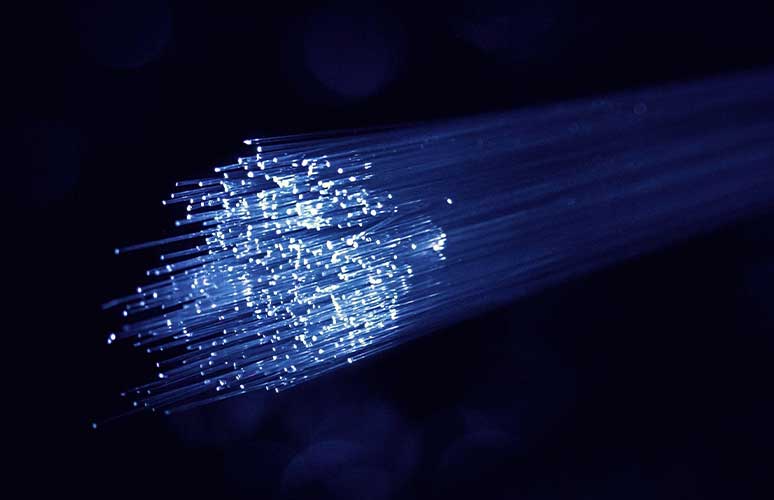
What Is 5G?
5G, or fifth-generation wireless, is the most recent cellular technology advancement. It was engineered to be speedier and more responsive than the previous wireless networks.
With 5G comes many promises, such as peak speeds of 20 gigabits per second (broadband, in comparison, usually has a peak speed of one gigabit per second).
Latency, or the lag between requesting and receiving information, could be as low as five milliseconds or even lower with 5G. This would be highly useful for various business applications that require real-time feedback. Fifty milliseconds or lower is currently considered a good broadband latency rate.
5G should also dramatically increase the amount of data transmitted over wireless systems because of its advanced antenna technology and increased bandwidth availability.
Over the next several years, there are extensive plans for 5G networks and services to be deployed in stages. 5G is not yet available everywhere and will likely take several years or more to become ubiquitous.
Pros and Cons of Broadband
Now that we’ve discussed the basic definitions of broadband and 5G, let’s get into the pros and cons of Broadband Vs. 5G. We’ll start by digging into the advantages and drawbacks of a broadband internet connection for businesses.
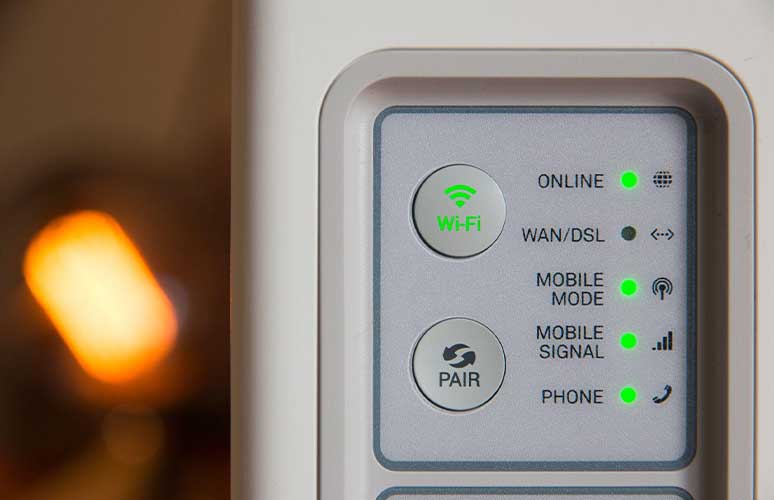
The Advantages
Broadband internet connections come with numerous benefits.
High Speed
Although not as fast as 5G is advertised to be, broadband connections come with very high speed, especially in comparison to dial-up connections. In fact, broadband is typically ten to 100 times faster than dial-up, making it an excellent choice for downloading large files.
In addition, numerous users can work simultaneously without decreasing the speed of the broadband connection.
Business broadband connections, in particular, are especially speedy and smooth. Even during the peak hours of the day, connection speeds remain consistent.
Availability
Broadband connections are available 24/7 and rarely experience technical glitches.
Reliability
Dial-up connections were known for their frequent outages, but broadband connections hardly ever face failures and are much more reliable thanks to their digital connections.
Consistency
Broadband internet connections do not have connection time-outs or automatic cut-offs. In most cases, the speed is consistent, even when the weather is bad.
Reasonable Cost
Although broadband costs more than its predecessor (dial-up), it costs far less than 5G. Rather than being billed according to how much time is spent on the internet, which would quickly add up for businesses, users are charged a flat rate according to their chosen plan.
Most businesses require most or all of the features included in broadband business packages, so even though business services tend to cost more than home broadband services, they are often worth the higher price. Comparing various internet service providers’ rates can enable your business to get the most out of its IT spend.
At Technology Procurement Group, we specialize in helping businesses find the best vendors for their internet and voice services. We prioritize your business objectives and cost savings while promoting partnerships between our clients and their service providers. Learn more about our service offerings by calling 1-888-449-1580, emailing info@TPG-llc.com, or filling out the form at the bottom of the page.
Uninterrupted Phone Lines
Unlike dial-up, broadband connections do not interrupt phone service. In addition, broadband can also support voice services like VoIP (Voice over Internet Protocol).
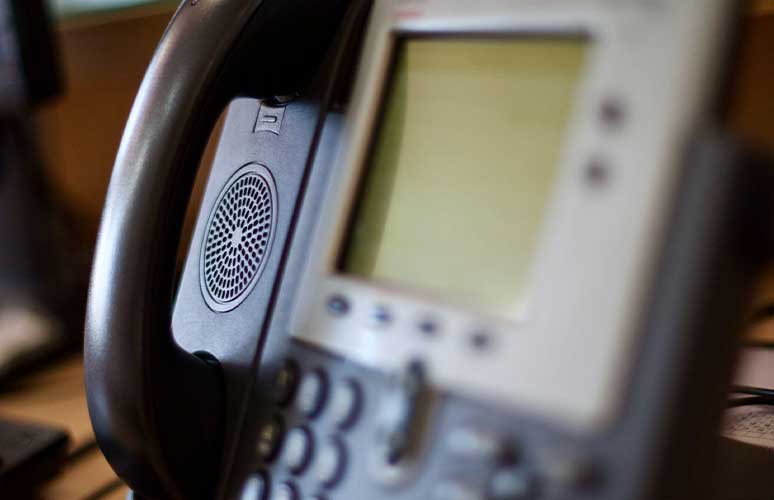
All-Hours Support
Broadband is the lifeline of most businesses, so reliable support services are essential.
Most business broadband packages include all-hours support so that if an outage occurs, everything is back online very quickly.
Often, there are even terms in the service level agreements (SLAs) that guarantee the resolution of outages within a certain amount of time.
Static IP Address
Business broadband usually includes a dedicated server with its own static or permanent IP address (in some cases, multiple static IPs). This enables your business to have its own email servers, install and manage software, and host websites from a single central location.
Additional Perks
Compared to personal broadband connections, business broadband often comes with additional perks that offset the higher cost.
These may include higher or unlimited data download limits, business routers, Wi-Fi hotspots, other technological accessories, and business-specific email accounts.
The Drawbacks
There are a few considerations to keep in mind with broadband internet connections.
Reliant on ISP Servers
Even though broadband connections are extremely fast, they rely on ISP (internet service provider) servers. Therefore, any issues with the ISP, such as outdated or overburdened servers, can impact your business’s broadband speed.
Security Concerns
Computers using broadband connections can be vulnerable to security threats in some cases. This is especially true with wireless connections; there’s a risk of hackers accessing the connection without anyone realizing unless extra protections like firewalls are put into place.
However, most business broadband packages are safeguarded in multiple ways to address these known security concerns. Safeguards typically include a systematic backup and recovery process and high-end security software to protect sensitive business data and ensure business continuity.

Inaccessible to Some Rural Areas
Sometimes, businesses in rural areas may have issues accessing broadband connections, specifically fiber and DSL connections.
Occasional Low Signal Strength
Wireless broadband connections, in particular, can experience weak signals due to the need to pass through walls and roofs. On occasion, bad weather can also negatively impact the strength of a wireless broadband connection.
Pros and Cons of 5G
Let’s examine the pros and cons of 5G internet services.
The Advantages
5G is purported to have so many benefits that it may seem too good to be true! Let’s dive into these advantages and see why broadband is hailed as such a monumental technical advance.
Impressive Speed
Not only is 5G faster than the previous generations of wireless networks, but it’s also faster than broadband connections. It’s thought that once the rollout of 5G is complete, many businesses will see 5G as a viable alternative to broadband because of the increased speed.
Improved Latency
Latency, the time between the user taking action and receiving the desired response (for instance, the time elapsed between clicking a website link and the website loading), is much improved with 5G.
5G latency could be five milliseconds or even lower, which is highly beneficial to applications like the Internet of Things (IoT) and AI (artificial intelligence).
Increased Capacity and Bandwidth
In comparison to 4G, 5G may have as much as 1000 times more capacity, which means it can handle simultaneous high-demand applications and will also be able to connect numerous internet-enabled devices.
In addition, more bandwidth means a faster connection supporting more devices and more versatility.
For businesses specifically, 5G’s increased capacity means that employees who switch between working in remote environments and the office will be able to take advantage of mobile and WiFI connectivity without affecting broadband accessibility or performance.

Enhanced Innovation Opportunities
Thanks to the low latency and high capacity of 5G, industries like manufacturing, retail, entertainment, and healthcare will be able to innovate and experience notable technological advancement as they’re connected more than ever before.
The Drawbacks
No technological advancement is without its drawbacks and weaknesses. While 5G has many positive attributes, there are multiple downsides to consider.
High Investment
If your business wants to implement and get the most out of 5G, it’ll be necessary to build a private 5G network, which is a huge investment.
Not only that, but once the network is built, integration with your business’s IT systems and IoT devices will involve time, effort, and additional costs. It may even be necessary to invest in an IoT exposure interface as well.
Altogether, 5G implementation for businesses can cost several million dollars.
Limited Coverage
Currently, 5G coverage is uneven and quite limited; it’s only available in specific locations, like big cities. Remote areas likely won’t have 5G connectivity for many years to come.
Installation and Deployment Challenges
In comparison to 4G, 5G cannot travel as far, and objects like trees and buildings can block it. To eliminate this issue and ensure even coverage, it’s necessary to install many more 5G towers, and this is both time-consuming and extremely expensive.
In addition, many residents of areas where 5G will be installed have been resistant to the installation of so many towers. This has resulted in delayed installation and continued spotty 5G coverage.
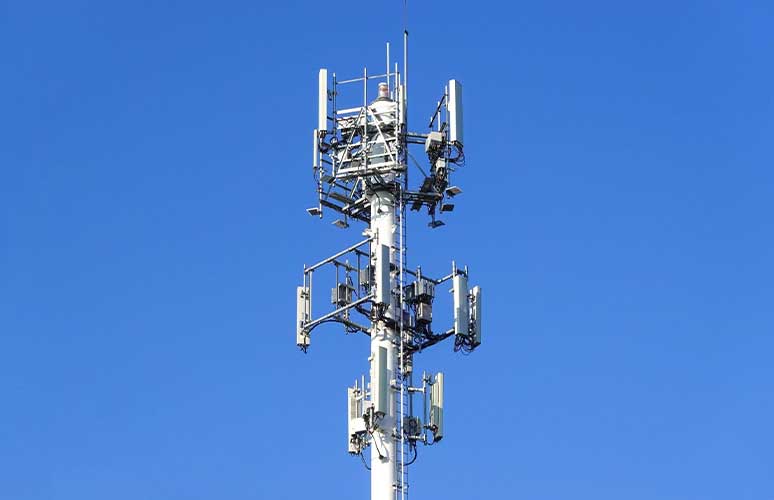
Depleted Device Battery Life
When it comes to device battery life, there have been mixed reports regarding 5G’s effects.
Some say that 5G depletes their devices’ battery life and makes their devices hot to the touch; however, this appears to be a complaint limited to mobile phones.
Others say that IoT devices specifically could experience 90% reduced network energy usage with 5G and thus won’t drain their batteries as quickly. They even report that some low-power devices’ batteries could last for ten years.
Security Vulnerabilities
Hackers are always quick to exploit the vulnerabilities of new breakthrough technologies, and this will surely be the case with 5G. This means there is a need for increased security solutions when using a 5G internet connection.
5G has decentralized security and strains security monitoring with its increased bandwidth.
In addition, 5G is software-managed, so hackers that can access the software will have control over the network. Plus, expanded bandwidth opens up new pathways for attack. As more IoT devices are connected to 5G, there’s a larger attack surface available as well.
Another issue with IoT devices is that many of them have a complete lack of security. Smart thermometers, door locks, TVs, speakers, and refrigerators can all be weak points where a hacker can access a network.
Overall, 5G’s benefits contribute to a lack of cybersecurity, which can be very problematic for businesses that handle important and sensitive information. There’s definitely a need for new methods of stopping security threats.
Conflicts with Local Governments
Because its hardware requirements are seen as excessive, some local governments are fighting against the installation of 5G. One of the arguments made is that the numerous towers needed can have a negative impact on the beauty of the area.
The Federal Communications Commission has approved providers to begin 5G installation anyway, bypassing local governments’ objections. As a result, many of these governments have decided to take legal action in response to the FCC overriding their power.

Advertised Speed Isn’t Always Available
There are different types of 5G, and the speed that’s typically advertised is that of mmWave 5G. However, low-band 5G has speeds that are similar to 4G, and mid-band 5G is not yet publicly available.
The mmWave 5G works best in open environments and struggles to move through walls, so if your business doesn’t have an open floor plan, this could be an issue.
Many businesses will need to wait for low-band 5G’s speeds to improve or for mid-band to become widely available in order to get the connection speeds that have been promised.
Is 5G Replacing Broadband?
Although 5G has been introduced and installed in some areas, it will likely be quite a while before it becomes the dominant form of internet service. Learn more about 5G’s current developments below.
Current Developments: Two Types of 5G Services
Network operators are currently developing two types of 5G services.
The first type is 5G cellular services, which first started rolling out in 2019. This was when the first 5G-compliant devices became commercially available. These cellular services provide users with access to the operators’ cellular networks.
The second type is 5G fixed wireless broadband services, which deliver internet access to businesses and homes without any need for a wired connection.
The goal is for this type of 5G internet access to make it less costly for broadband services to be delivered to businesses and homes. With this approach, there’s no need for fiber optic lines running to every business location and residence. Instead, operators just need to install fiber optics to cell sites; end users will receive internet services through wireless modems.
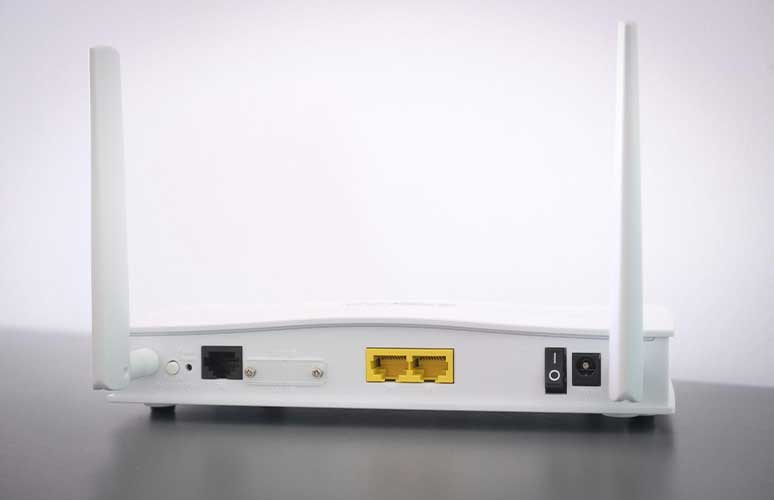
Potential Applications of 5G Technology
With 5G technology, there will come a new era characterized by new connected experiences, enhanced speed, and improved network performance.
As far as manufacturing, equipment failure is responsible for more than 40% of unplanned downtime. With more connected factories, businesses will be able to produce more within a reduced timeframe, and this will lead to more affordable prices for end consumers.
Within the retail industry, many shops have decided to shut down physical stores and focus on online storefronts. With 5G, they’ll be able to create more dynamic websites, improving the customer experience.

The automotive industry has seen the idea of driverless vehicles transform from science fiction to reality thanks to IoT and 5G advances. Aside from this advance, 5G can also provide information on accidents and traffic. Vehicles may gain the capability of sharing information with other vehicles and even other roadway entities like traffic lights.
In the healthcare sector, healthcare-related businesses will likely transition to the cloud so that patient data remains both secure and accessible. Remote surgeries could become more common as AI and 5G-powered robotics advance. Patients may also start being monitored with various connected devices so data regarding blood pressure, heart rate, and other health indicators are constantly delivered to their care team.
The Need for Increased Network Security
As mentioned above when discussing the drawbacks of 5G, increased network security is a necessity as 5G continues to grow in prevalence. Many things need to happen before 5G becomes the norm and begins to overtake broadband internet connections.
It’s thought that network providers will soon begin to focus on collaborating with cybersecurity firms to address the unique risks that come with 5G connectivity. They may develop various solutions for encryption, identify effective ways of monitoring networks, and more.
One potential issue has to do with manufacturers of 5G-connected products, particularly low-end products like smart baby monitors at low prices and smartwatches intended for children.

The reality is that 5G security is only as strong as the weakest piece of technology connected to the network. But for many manufacturers, the development and implementation of secure technology are far too expensive to consider.
However, if it were possible for manufacturers to receive benefits to offset the losses they will take by implementing security measures, this may entice them to improve their protections for consumers.
Product labeling standards that indicate the level of an item’s security will be necessary as well, and it will likely be smart technology manufacturers that are held accountable for creating and maintaining a valid label system.
It will also be crucial for consumers to be well-educated on IoT cybersecurity. The general public will need to be aware of how important it is to secure all of their internet-connected devices with software updates.
Is 5G Right for Your Business?
Implementing 5G is an option to consider, but it won’t be the right choice for all businesses at this time.
The Newest Technology Isn’t Always the Most Beneficial
While there’s a constant push to jump into the installation and use of the newest technology, it’s important to remember that new doesn’t always mean better or more beneficial.
If you’re happy with your current broadband connectivity and don’t find it lacking, and if you don’t have a multi-million dollar budget to spare on the installation and implementation of a private 5G network, then it’s likely a better choice for your business to stick with broadband.

You’ll need to look at your current connectivity and identify any improvements that you’d like to see in it, then go through the various 5G types and evaluate whether they would successfully make those improvements. Would the benefits you’d see from 5G be worth the cost of installation and implementation?
At the end of the day, the decision of whether or not to move away from broadband and adopt 5G depends on your business’s specific needs.
The types of businesses that have the most to gain from 5G are those that need to increase their bandwidth or extend the battery life of their IoT devices. In some cases, businesses with offices in rural areas that don’t have reliable broadband connectivity may also wish to switch over to 5G.
What’s Holding Businesses Back from Implementing 5G
There are multiple potential issues holding some businesses back from embracing 5G at this time.
Security Concerns
The first is security, especially when it comes to the IoT, as discussed previously in this article. 5G was engineered for increased capacity, not for top-notch security.
Very few IoT devices have the necessary security, and in the hurry to deploy 5G networks as rapidly as possible, there’s a good chance security will be compromised.
Unsecured connected devices paired with unsecured networks are likely to result in detrimental distributed denial of service (DDoS) attacks.

Although the IoT is growing in popularity as a tool for small and mid-sized businesses, 5G is not the ideal type of internet connection for these connected devices.
Potential Health Risks
Various municipalities are also fighting against 5G, both for aesthetic reasons and potential health risks.
5G networks need to have antennas installed every few hundred feet, whereas, in the past, wireless towers were spaced about a mile apart. Understandably, they aren’t the most visually appealing addition to a community.
While there aren’t any proven health risks that come along with 5G, we don’t have any data on health impacts caused by high-frequency electromagnetic frequency radiation. This is something that needs more research, as it’s not clear whether or not health risks are involved.
Obstacles to Obtaining Promised Internet Speed
Even though 5G has the potential to be extremely fast and provide decreased latency in comparison to 4G, there are obstacles to obtaining these faster speeds. For example, businesses will need to purchase all new 5G-enabled routers and phones.

Even after making this huge investment, businesses’ new 5G connections may struggle to transmit if there are walls, people, furniture, or other obstacles in the way.
Most 5G testing takes place in an ideal environment, so there’s no guarantee that the promised speed and latency rate will carry over to the typical office building.
Interference with Other Necessities
Yet another concern has to do with weather satellites; there’s a good chance that 5G satellites will interfere with them.
This won’t affect all businesses, but the aviation and agriculture industries, along with utility companies, rely on accurate weather predictions and would suffer adverse effects if 5G were to interfere with weather satellites.
The Case for Combined Broadband and 5G Networks
A report from NTT, a global business solutions provider, stated that 90% of executives believe that private 5G will be their choice of standard network in the future.
Still, it appears that a hybrid model of combined broadband and 5G may be the next step for many businesses within the next few years.
Currently, the most common barrier for businesses wishing to deploy private 5G networks has to do with integrating 5G with their existing networks and systems. The high cost is also a barrier, especially for small and midsize businesses.

Backward compatibility is also something that many businesses are thinking about.
Backward compatibility essentially means that a lot of older technology is able to connect to broadband internet, whereas, with 5G, it’s necessary to purchase all-new devices every few years to keep up with advancements.
Older technology cannot connect to 5G, so installing 5G means committing to large purchases of the latest technology.
5G’s huge bandwidth and low latency make it a wise investment for specific industries, but experts say that many businesses would be better off investing in high-quality broadband internet services and ensuring they have access to 5G in the situations that necessitate it.
This is supported by Deloitte’s finding that 99% of decision-makers plan to use both 5G and Wi-Fi 6 within the next year.
We’ve come up with the advantages and disadvantages of Broadband Vs. 5G. As of right now, the future of business connectivity is not broadband or 5G; it’s both.
TPG Can Help You Identify Your Business Needs

At Technology Procurement Group, our knowledgeable group of procurement specialists is here to help you with all of your telecom needs. With decades of experience in the industry, we have the expertise you need to procure the telecom products and services your business requires.
Not only do we offer telecom procurement strategy consulting and IT procurement services, but we also provide telecom and wireless expense management, RFP management, wireless expense reduction, and telecom contract negotiation.
Interested in getting more information? Call us at 1-888-449-1580, email us at info@TPG-llc.com, or complete the form at the bottom of the page. We look forward to hearing from you!




